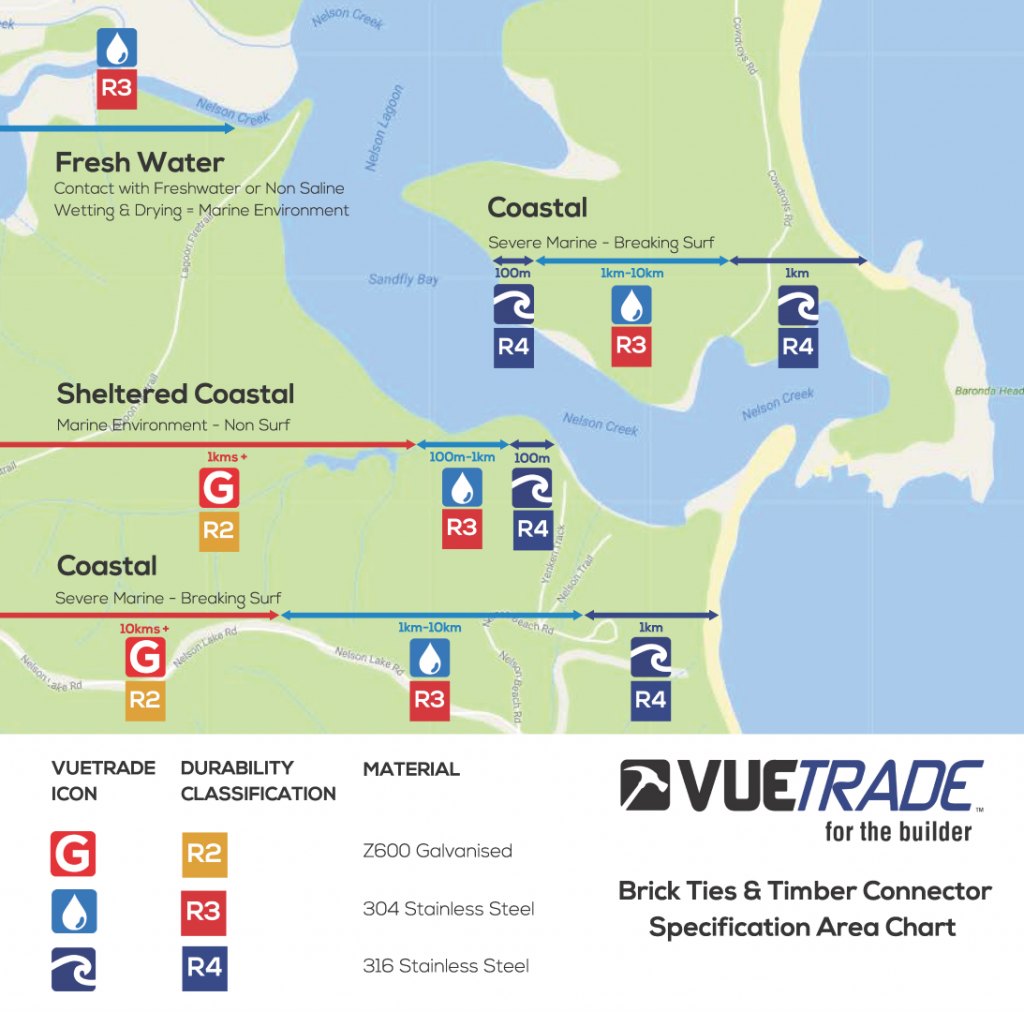VUETRADE Brick Tie Durability Classification and Duty Classification Guide
Brick Ties Specification Guide from VUETRADE follows the requirement from AS/NZS 2699.1:2000, in regards to the durability classification test.
Either view the specification guide here, or download the PDF version below:
PDF VUETRADE Timber Connectors Specification Guide – Brick Ties
As per requirement from AS/NZS 2699.1:2000, all wall ties are required to be tested and classified in terms of durability classification of R0, R1, R2, R3, R4 and R5. These durability classifications detail the type of coating material and its coating mass that is required in the manufacturing of wall ties as per Table 3 of AS/NZS2699.1:2000.
The table below shows the extraction of AS/NZS2699.1:2000 – Table 3 for durability classification of masonry wall ties.
[table “160” not found /]VUETRADE Brick Veneer ties are manufactured in Z600 Galvanised Steel to suit Durability Classification R2, Stainless Steel 304 for Durability Classification R3 and Stainless Steel 316 for Durability Classification R4. AS/NZS2699.1:2000 states that this durability classification R0 to R5 are based on the aerosol penetration as per clause 2.4.4 (f) as follows,
[table “161” not found /]The application of different brick ties based on durability classification are dependent on the location where the brick tie will be used. Reference can be made to Figure 1 which illustrates the location of brick tie applications and its minimum recommended brick tie material; and Table 2 describes the list of VUETRADE brick ties range along with its respective durability classification.

Duty Classification Guide
Apart from the durability classification, AS/NZS2699.1:2000 also requires supplier/distributor/manufacturer to run tests based on methodology listed in the standard’s Appendices A to H in order to qualify a product to be ‘compliant’. Appendix B in particular is necessary as a requirement to classify Type A ties (not required to have specific seismic design characteristic) into light, medium or heavy duty ties. From the standards, the classification of these ties are determined by the minimum characteristic strength of ties in tension and compression, listed in Table 1 of AS/NZS2699.1:2000. VUETRADE Brick Ties has verified test results on brick ties that classified brick ties into its light duty and medium duty classification depending on the return characteristic strength.
[table “163” not found /]To determine what ties duty builders would need to use i.e. light duty or medium duty, are dependent on site application of brick ties. Qualified architect, structural engineer or building surveyor would need to be consulted to determine which wall tie duty rating are necessary in the building construction which takes into account of various requirements such as wall tying requirements and relevant lateral bending capacity for the design of cavity walls. VUETRADE as the supplier of the VUETRADE brick ties are required to provide information of the brick tie duty classification and durability classification, but it is up to the application of brick tie during the wall and building integrity design to determine on what tie duty classification would be needed in order to comply to relevant building codes and Australian Standard.
